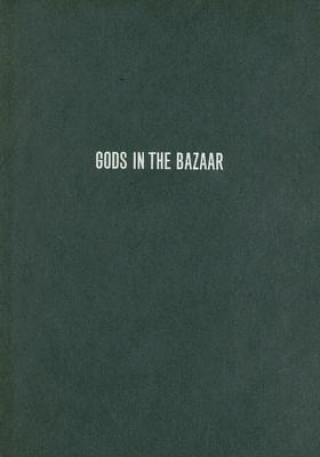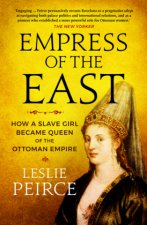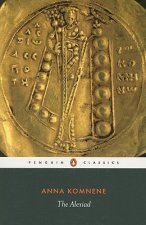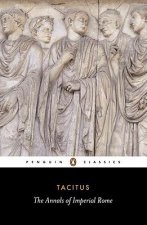
Kód: 04938464
Gods in the Bazaar
Autor Kajri Jain
"Gods in the Bazaar" is a fascinating account of the printed icons known in India as 'calendar art' or 'bazaar art', the colour-saturated, mass-produced images often used on calendars and in advertisements, featuring deities and o ... celý popis
- Jazyk:
 Angličtina
Angličtina - Väzba: Pevná
- Počet strán: 448
Nakladateľ: Duke University Press, 2007
- Viac informácií o knihe

158.37 €
Dostupnosť:
50 % šanca Máme informáciu, že by titul mohol byť dostupný. Na základe vašej objednávky sa ho pokúsime do 6 týždňov zabezpečiť.
Máme informáciu, že by titul mohol byť dostupný. Na základe vašej objednávky sa ho pokúsime do 6 týždňov zabezpečiť.Prehľadáme celý svet
Mohlo by sa vám tiež páčiť
-

Global Optimization in Engineering Design
276.59 € -

Controversy of Renaissance Art
93.89 € -

Frege's Logic
107.18 € -

His Last Wife
18.59 € -

History of the Town of Exeter, New Hampshire
55.37 € -

2 Ouvertüren/m. CD
20.94 € -2 % -

Collected Oz Volume Two
27.17 €
Darujte túto knihu ešte dnes
- Objednajte knihu a vyberte Zaslať ako darček.
- Obratom obdržíte darovací poukaz na knihu, ktorý môžete ihneď odovzdať obdarovanému.
- Knihu zašleme na adresu obdarovaného, o nič sa nestaráte.
Informovať o naskladnení knihy
Zadajte do formulára e-mailovú adresu a akonáhle knihu naskladníme, zašleme vám o tom správu. Postrážime všetko za vás.
Viac informácií o knihe Gods in the Bazaar
Nákupom získate 392 bodov
 Anotácia knihy
Anotácia knihy
"Gods in the Bazaar" is a fascinating account of the printed icons known in India as 'calendar art' or 'bazaar art', the colour-saturated, mass-produced images often used on calendars and in advertisements, featuring deities and other religious themes as well as nationalist leaders, alluring women, movie stars, chubby babies, and landscapes. Calendar art appears in all manner of contexts in India: in chic elite living rooms, middle-class kitchens, urban slums, village huts; hung on walls, stuck on scooters and computers, propped up on machines, affixed to dashboards, tucked into wallets and lockets.In this beautifully illustrated book, Kajri Jain examines the power that calendar art wields in Indian mass culture, arguing that its meanings derive as much from the production and circulation of the images as from their visual features. Jain draws on interviews with artists, printers, publishers, and consumers as well as analyses of the prints themselves to trace the economies - of art, commerce, and religion - within which calendar images and ideas about them are formulated.For Jain the bazaar, or popular commercial arena, is crucial to understanding not only the calendar art that circulates within it but also India's postcolonial modernity and the way that its mass culture has developed in close connection with a religiously inflected nationalism. The bazaar is characterized by the coexistence of seemingly incompatible elements: bourgeois-liberal and neo-liberal modernism on the one hand, and vernacular discourses and practices on the other. She contends that from the colonial era to the present, capitalist expansion has depended on the maintenance of contradictory yet coexisting realms: the sacred, the commercial, and the artistic; the official and the vernacular.
 Parametre knihy
Parametre knihy
Zaradenie knihy Knihy po anglicky Humanities History Regional & national history
158.37 €
- Celý názov: Gods in the Bazaar
- Podnázov: The Economies of Indian Calendar Art
- Autor: Kajri Jain
- Jazyk:
 Angličtina
Angličtina - Väzba: Pevná
- Počet strán: 448
- EAN: 9780822339069
- ISBN: 0822339064
- ID: 04938464
- Nakladateľ: Duke University Press
- Hmotnosť: 1397 g
- Rozmery: 262 × 190 × 33 mm
- Dátum vydania: 06. April 2007
Obľúbené z iného súdka
-

Hundred Years' War on Palestine
12.05 € -24 % -

Ten Myths About Israel
12.56 € -16 % -

Strange Death of Europe
16.54 € -16 % -

The Balkans, 1804-2012
21.96 € -23 % -

Empress of the East
14.40 € -23 % -

Diana: Her True Story - In Her Own Words
12.25 € -23 % -

Rise And Fall Of The Third Reich
21.96 € -23 % -

Dictatorland
13.78 € -7 % -

Maurice's Strategikon
30.54 € -2 % -

Voynich Manuscript
41.27 € -

Line in the Sand
11.74 € -6 % -

Conquest of New Spain
14.40 € -23 % -

History of Venice
18.69 € -23 % -

We Were Soldiers Once...And Young
12.25 € -23 % -

Palestinian-Israeli Conflict: A Very Short Introduction
12.56 € -10 % -

Cuneiform
11.13 € -23 % -

Short History of Byzantium
18.69 € -23 % -

Great War for Civilisation
20.12 € -22 % -

Flame Trees Of Thika
12.25 € -23 % -

American Nations
16.65 € -14 % -

Games without Rules
19.20 € -6 % -

Battle of Britain
16.54 € -23 % -

Fortress Third Reich
27.68 € -

Brief History of the Hundred Years War
12.25 € -23 % -

Drawing on Archaeology
27.17 € -4 % -

British Culture
74.68 € -

Bismarck and the Development of Germany
103.80 € -

Setting the Desert on Fire
16.24 € -13 % -

Recreating the Past
20.73 € -

Life of Anne Boleyn Colouring Book
11.33 € -4 % -

Oxford History of the Biblical World
18.79 € -19 % -

Fortress France
24.21 € -

Habsburg Monarchy 1809-1918
16.54 € -23 % -

P-40 Warhawk Aces of the MTO
29.01 € -

British Destroyers 1939-45
14.40 € -23 % -

Ethnic Cleansing of Palestine
14.40 € -23 % -

Decline and Fall of the Roman Empire
5.92 € -21 % -

Palestine
20.22 € -21 % -

The Secret Diaries Of Miss Anne Lister: Vol. 1
13.58 € -14 % -

Giza Power Plant
16.03 € -16 % -

Citizens
21.96 € -23 % -

Millennium
13.17 € -24 % -

Alexiad
17.77 € -20 % -

Heraclius, Emperor of Byzantium
33.30 € -18 % -

Last Voyage of the Lusitania
20.63 € -

1948
24.62 € -10 % -

Annals of Imperial Rome
14.40 € -23 % -

Strike and Hold
29.93 € -3 % -

Moshe Dayan
27.27 € -9 %
Osobný odber Bratislava a 2642 dalších
Copyright ©2008-24 najlacnejsie-knihy.sk Všetky práva vyhradenéSúkromieCookies


 21 miliónov titulov
21 miliónov titulov Vrátenie do mesiaca
Vrátenie do mesiaca 02/210 210 99 (8-15.30h)
02/210 210 99 (8-15.30h)